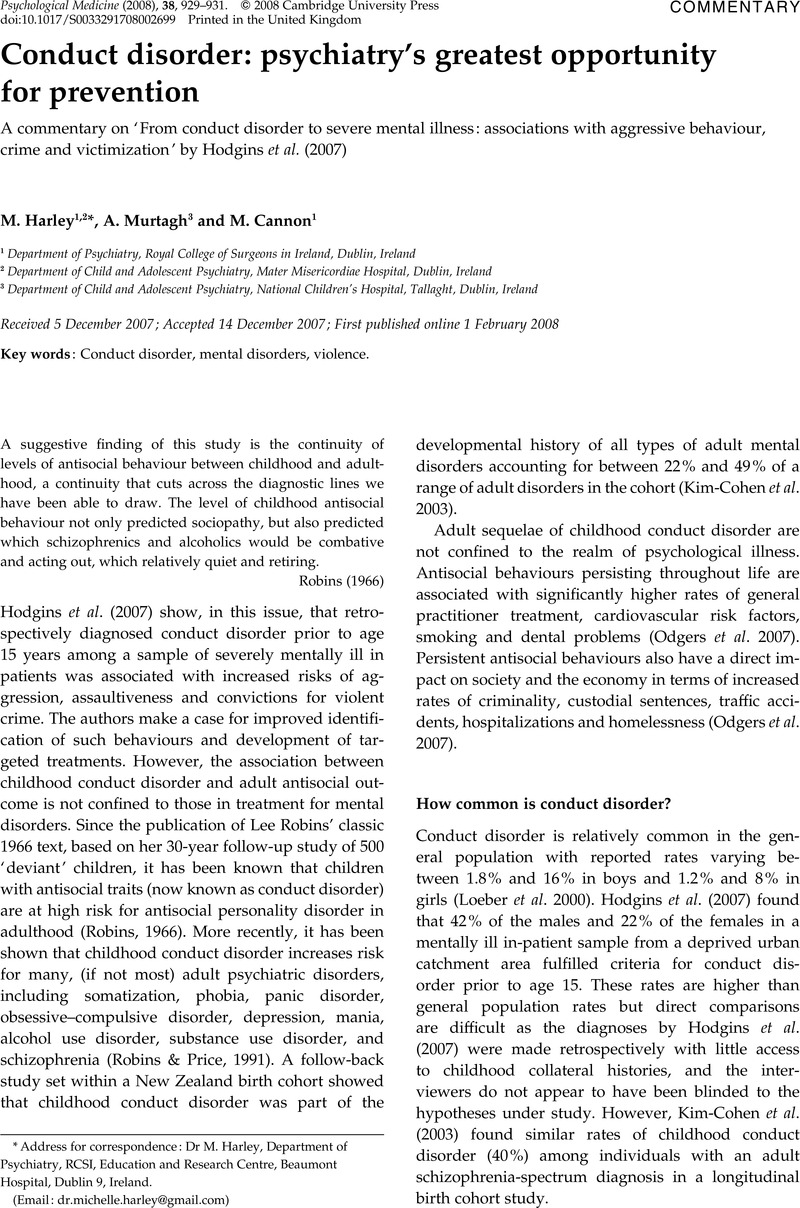Crossref Citations
This article has been cited by the following publications. This list is generated based on data provided by Crossref.
Olino, Thomas M.
Seeley, John R.
and
Lewinsohn, Peter M.
2010.
Conduct Disorder and Psychosocial Outcomes at Age 30: Early Adult Psychopathology as a Potential Mediator.
Journal of Abnormal Child Psychology,
Vol. 38,
Issue. 8,
p.
1139.
Gyllenberg, David
Sourander, Andre
Niemelä, Solja
Helenius, Hans
Sillanmäki, Lauri
Ristkari, Terja
Piha, Jorma
Kumpulainen, Kirsti
Tamminen, Tuula
Moilanen, Irma
and
Almqvist, Fredrik
2011.
Childhood Predictors of Use and Costs of Antidepressant Medication by Age 24 Years: Findings from the Finnish Nationwide 1981 Birth Cohort Study.
Journal of the American Academy of Child & Adolescent Psychiatry,
Vol. 50,
Issue. 4,
p.
406.
Silva, Luna Rodrigues Freitas
2011.
Transtorno da conduta: uma oportunidade para a prevenção em saúde mental?.
Interface - Comunicação, Saúde, Educação,
Vol. 15,
Issue. 36,
p.
165.
Healy, Colm
Gordon, Aoife A.
Coughlan, Helen
Clarke, Mary
Kelleher, Ian
and
Cannon, Mary
2019.
Do childhood psychotic experiences improve the prediction of adolescent psychopathology? A longitudinal population‐based study.
Early Intervention in Psychiatry,
Vol. 13,
Issue. 5,
p.
1245.
Gin, Kimberley
Stewart, Catherine
and
Jolley, Suzanne
2021.
A systematic literature review of childhood externalizing psychopathology and later psychotic symptoms.
Clinical Psychology & Psychotherapy,
Vol. 28,
Issue. 1,
p.
56.
Healy, Colm
Brannigan, Ross
Dooley, Niamh
Staines, Lorna
Keeley, Helen
Whelan, Robert
Clarke, Mary
Zammit, Stanley
Kelleher, Ian
and
Cannon, Mary
2022.
Person-Centered Trajectories of Psychopathology From Early Childhood to Late Adolescence.
JAMA Network Open,
Vol. 5,
Issue. 5,
p.
e229601.



